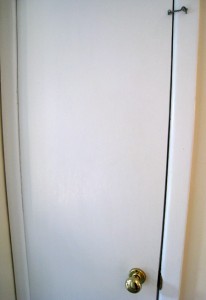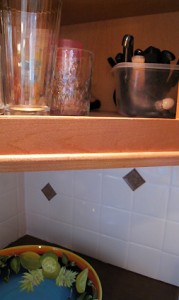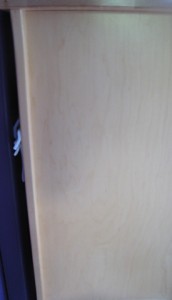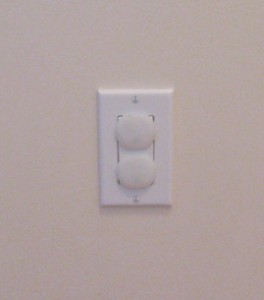Recently, we linked to a discussion of dangers for children in the home. This time, we’d like to present some ways of making your home safer.
1. Cribs – make sure to buy a new model when your child is born. If you’re using a crib from a previous child – call the manufacturer to make sure it hasn’t been recalled or had any problems. Buy a new firm mattress for each child and follow The American Academy of Pediatrics standards.
2. Window Cords – I made sure not to have window treatments with cords since they’re a strangulation hazard. If you already have cords on your windows, the American Academy of Pediatrics recommends that you, “Tie cords high and out of reach. Do not knot cords together.”
3. Bathroom – I put an eye and hook lock on the outside of the bathroom door so my kids couldn’t go in without me knowing about it.
- Never leave your child unattended in the bath tub.
- Hot water – you can have a plumber set your hot water so that it doesn’t get hotter than 120°F (as recommended by the AAP).
- Chemicals – keep all household chemicals on a high shelf out of reach of children. We keep all of our cleaning supplies on the top shelf of the hallway closet. I put an eye and hook lock high up on the outside of the hallway closet with the chemicals so the kids couldn’t get into it. If your child does eat something that could be poisonous, call the Poison Help Line at 1-800-222-1222 immediately.
- Medicines – keep all medicines high and out of reach of children. I keep medicines that aren’t used often in the hallway closet, locked with an eye and hook lock high up.
4. Kitchens – I put a gate to the kitchen so that my children couldn’t go in, without me letting them.
- Stoves – If you’re buying a new stove, try to purchase one with controls at the back so little kids can’t reach them. If the controls are in the front you can remove the handles when you’re not cooking.
- Highchairs – Get a highchair with a large base that won’t tip over easily. Also, buckle your child into the highchair and keep the tray on so they can’t get out without your knowledge.
- Knives – Store them in a high place, out of reach of children.
5. Keep plastic bags locked in the hallway closet or somewhere high up where your child can’t get to them.
6. Have working smoke detectors on every floor including the basement, furnace room and especially the sleeping areas. Check the batteries every year.
7. Baby gates – don’t put gates at the top of stairs. We put ours at the bottom of the stairs so our children couldn’t go upstairs without our knowing about it. Lock the doors to dangerous areas like garages and basements. Basically, we established a very safe area for our children to play in during the day on the first floor (especially when they were under 3 years old).
8. Put window guards on windows above the first floor. Be careful about young children climbing furniture and chairs. Anchor heavy furniture into the wall. We anchored our dressers and large bookcases (small kids can try to climb up opened dresser drawers and the shelves of bookcases).
9. Electrical Outlets – cover all electrical outlets in your house. Install GFCI outlets in the bathroom, kitchen and outdoors (anywhere near water and within 6 feet of a sink).
10. Choking Hazards – be especially careful about small objects like deflated balloons, raw carrots, popcorn, grapes, peanuts and small toys. Always cut your small child’s food into little pieces.
11. If you have a swimming pool, install a fence that separates the house from the pool. Fence the pool in on all four sides. The AAP says that “Most children drown because they fall into a pool that is not fenced off from the house.”
Lastly, here’s one more message from the AAP:
Remember Car Safety!
Car crashes are still a great danger to your child’s life and health. Most injuries and deaths caused by car crashes can be prevented by the use of car safety seats EVERY TIME your child is in the car. An infant must always ride in a rear-facing car safety seat in the back seat until he or she is at least 1 year of age and at least 20 pounds. A rear-facing car safety seat should NEVER be placed in front of a passenger air bag. Your child, besides being much safer in a car safety seat, will behave better so you can pay attention to your driving. The safest place for all infants and children to ride is in the back seat.
AAP – Family Health Topics
Tags: Safety






